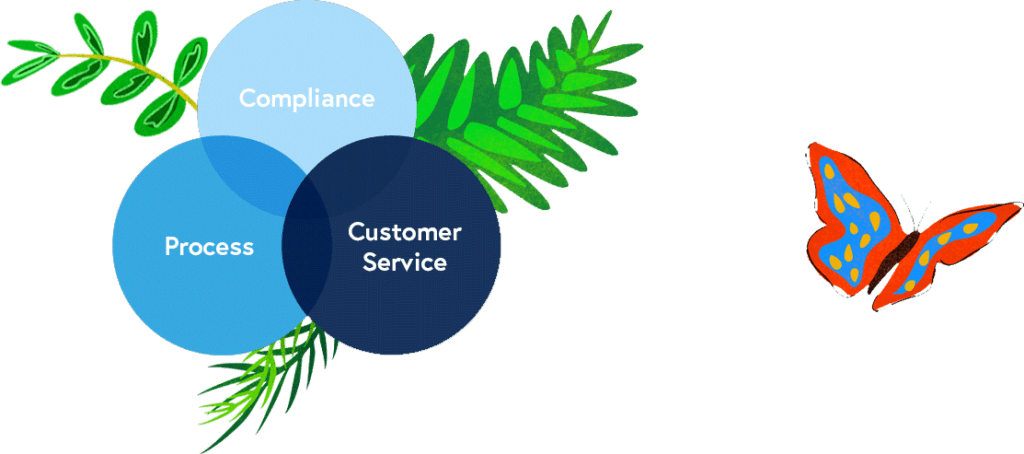An Analytics Expert’s Tips to Improve Compliance with Automated Quality Assurance












We’ve all been hearing more about how automated quality assurance can improve the customer experience – but can it manage your contact centre’s compliance risks too? Our auto-QA expert and analytics PhD, David Naylor, has valuable insights on AQA’s compliance applications and shares his thoughts on where the technology is currently at.
“It’s important to know how the process works and what’s achievable. A good provider should be realistic and help you understand it – rather than selling a pipe dream and walking away,” says David.
If you’re already confident about auto-QA and compliance, skip to the end for David’s personal tips that help you develop your QA compliance management strategy.
What is contact centre compliance vs quality assurance?
First, let’s clear up any confusion. Compliance concerns laws and regulations, whereas quality assurance (QA) seeks to improve interactions and give the customer a better experience so they trust and want to do business with you.
Compliance regulations are there to protect customers and, in the contact centre, they largely involve data privacy, misselling and general customer protection. In contrast, QA is a management process with the goal of delivering better customer service and developing your front-line agents.
But they do have an important shared goal, which is making sure every conversation counts– ultimately shaping your brand as one that consumers can (and do) rely on and protecting your business by mitigating risk.
As such, quality assurance frameworks typically aim to achieve a balance between customer service standards, process adherence and compliance.

If you’re not sure what quality assurance is, you’ll be hard-pressed to find a clearer explanation than our breakdown of QA for beginners.
What is automated quality assurance and how can it reduce compliance risk?
So, then, what is automated quality assurance and how can it improve compliance inside your contact centre? Let’s dive in with a textbook explanation.
Auto-QA takes manual processes within quality assurance and automates them. Unlike manual QA, this allows up to 100% of conversations to be analysed. Several components work together to translate voice and text data into a searchable database, allowing effective monitoring and improvement of compliance-related activity.
“It’s a better way to manage compliance risk in the call centre because it dramatically increases the scale and significance at which we can evaluate interactions,” says David. “The analytics side of auto-QA can spot risky agent behaviour or conversations, as well as problems in your internal processes – ultimately allowing you to carry out timely behavioural or operational changes.”
Several tools come together to allow you to automate parts of your QA:
But auto-QA is greater than the sum of its parts. “Conversations are the richest source of data inside your Contact Centre,” David emphasises. “Most of them contain information that isn’t captured by any other system metadata or customer surveys.”
When we consider the number of conversations automated quality assurance allows you to evaluate, that value comes to life.
“Manual QA might only analyse 3% calls, which is a tiny coverage of the potential compliance breaches. Deploying auto-QA can bring that up to almost 100%,” David explains.
If you need more convincing that auto-QA is a game-changer for risk reduction, perhaps you’ll be persuaded by our article on why (and how) we need to make every conversation count.
What are the compliance risks in my contact centre?
Compliance isn’t just for big players or heavily regulated industries anymore. There are now regulations that affect every contact centre, large or small, which makes the case for greater QA coverage even more compelling.
Common compliance risks faced by contact centres (across all industries) include:
On average, IT departments in call centres spend 25% of their time on compliance-related activity, and for good reason. In 2021, the average cost of a data breach rose from $3.86 million to $4.24 million. Regulators are working harder than ever to protect vulnerable customers and holding companies accountable for failure to fulfil their responsibilities.
For example, when Joyce transferred £100,000 to a scam investment, her bank failed to ask her critical safety questions. The ombudsman later stepped in and found the bank fully liable for Joyce’s losses.
“Every time a customer goes to the regulator with a complaint, it costs the company. In some industries, this costs thousands of pounds as a starting amount – that’s before the complaint is even investigated. This can happen multiple times a month. So there’s the direct cost of complaints, never mind the attrition of customers who don’t go that far but were still unhappy,” David warns.
Where automated quality assurance fits within analytics (and where it doesn’t)
“The searchable database generated by your analytics software is a foundation for two different processes – insight discovery and auto-QA,” explains David.
“Call categorization is an insights element, which answers ‘why are people calling us?’. But you can go deeper. For example, you could start looking at calls about delivery issues and generate data on what the specific issues are; the product was damaged, it didn’t turn up, it was thrown over the fence, etc.” Analytics can accurately quantify the number of these specific issues occurring. This creates the business case for actions to improve processes impacting the customer experience outside the contact centre to reduce the incoming demand on your agents.
“On the auto QA side of things, you’re looking for more structured conversation elements. You’re building processes so that you can check whether agents are, for example, verifying customers properly. So you might build a query to say that you need to hear a postcode and address in the first minute of the call,” David explains.
“Or, perhaps you need to check that after a sale, a compliance statement is read by the agent. This is easier to do because agents are often in more controlled environments than customers. So the automated scorecard is good at capturing those very precise things and scoring against them.”
“Another example of what you can do is combine auto-QA with automatic customer retention programs, to ensure that the correct compliance statements are given when trying to retain a customer,” says David, “making sure you aren’t misselling or overselling.”
“What analytics and auto-QA can’t do, however, is understand what’s going on in the conversation,” emphasises David. “And for that reason, it’s not (yet) very good at verifying whether complex processes took place correctly. That requires a level of natural language processing — and analytics tools that can piece together the exact flow of events in a call — that haven’t yet been achieved.”
“While analytics can’t ‘understand’, it can raise red flags,” explains David. “It can tell you ‘I think that 80% of calls do not contain this issue, but this 20% of calls I am not sure about’. And this is still valuable in terms of compliance because it can tell you this at scale. But it doesn’t completely replace listening to that 20% of calls and figuring out what actually happened.”
Looking for a supportive and honest auto-QA provider who gives full transparency on how their products can work in your contact centre? Try our product demo or our free trial.
1. Predetermine your use cases
“Before you even touch the auto-QA software, you need to be able to answer the question – what do I want to automate and why?” says David. “The areas to focus on first are making sure there’s no misselling and that all customer complaints are handled efficiently and effectively.”
2. Use metadata wherever possible
“Don’t use speech or text analytics to identify things you can reliably extract from metadata”, says David. “The most powerful solution is to first combine metadata to find the right subset of conversations and then apply analytics to dive deeper.”
(Metadata can simply mean the time and date of a conversation but are also things like customer information – their contact number, how long they’ve been a customer, which products they’ve purchased, etc.)
“Without using metadata, you can spend hours or weeks producing unreliable data with analytics. Your people will spend more time arguing and discounting the data than they will looking at the potential problem that you’re trying to highlight,” explains David.
“You could use metadata on what department the customer called to filter all sales calls, and then use agent metadata to filter the calls and only see agents who joined the team in the last six months. Then you can dig into your analytics queries on compliance statements, for example, to compare the way they are performing and delivering those statements.”
3. Make sure your analytics service is compliant
“Most applications today are cloud-hosted and so your precious customer conversations will be stored off-site. Good providers will be able to demonstrate how they keep your conversations secure to global standards and will provide the ability to remove personally identifiable customer information from the transcripts that are created,” explains David.
“Often, compliance breaches can result from third-parties, so get your results but don’t store the data for any longer than necessary,” warns David. “Limit the time you allow your calls, emails or chats to linger on the platform – once the analysis is done and the QA complete it is better to delete the raw data so you minimise the potential data leakage.”
4. Get your agents to help you develop queries
“Let’s say you want to build a conversation topic to help spot any suspicious activity like phishing or fraud,” says David. “While you will need specialist input from finance, you will also want the real-world experiences of your best agents on the frontline. They can share what they would listen for that makes them suspicious, to help you build the right alert topics that can provide an early warning system to support them.”
5. Don’t try to replace your existing quality assurance team
Over the years, business cases from software vendors have justified their astronomical setup and maintenance fees by encouraging businesses to disband their existing quality assurance team in favour of an entirely automated approach.
“But automated QA is not perfect and requires continual tuning by people who understand what it needs to be doing. It may reduce headcount a little and allow you to scale more effectively. However, the key benefit is reducing risks, not heads. Besides, would you really want something as important as compliance resting in the hands of a fully automated approach? And how will your agents feel about having their performance, development and, ultimately, their career becoming dependent on faceless systems?”
Remember, your benefits are always delivered by people. That’s why successful quality assurance blends the best parts of human action and AI.
